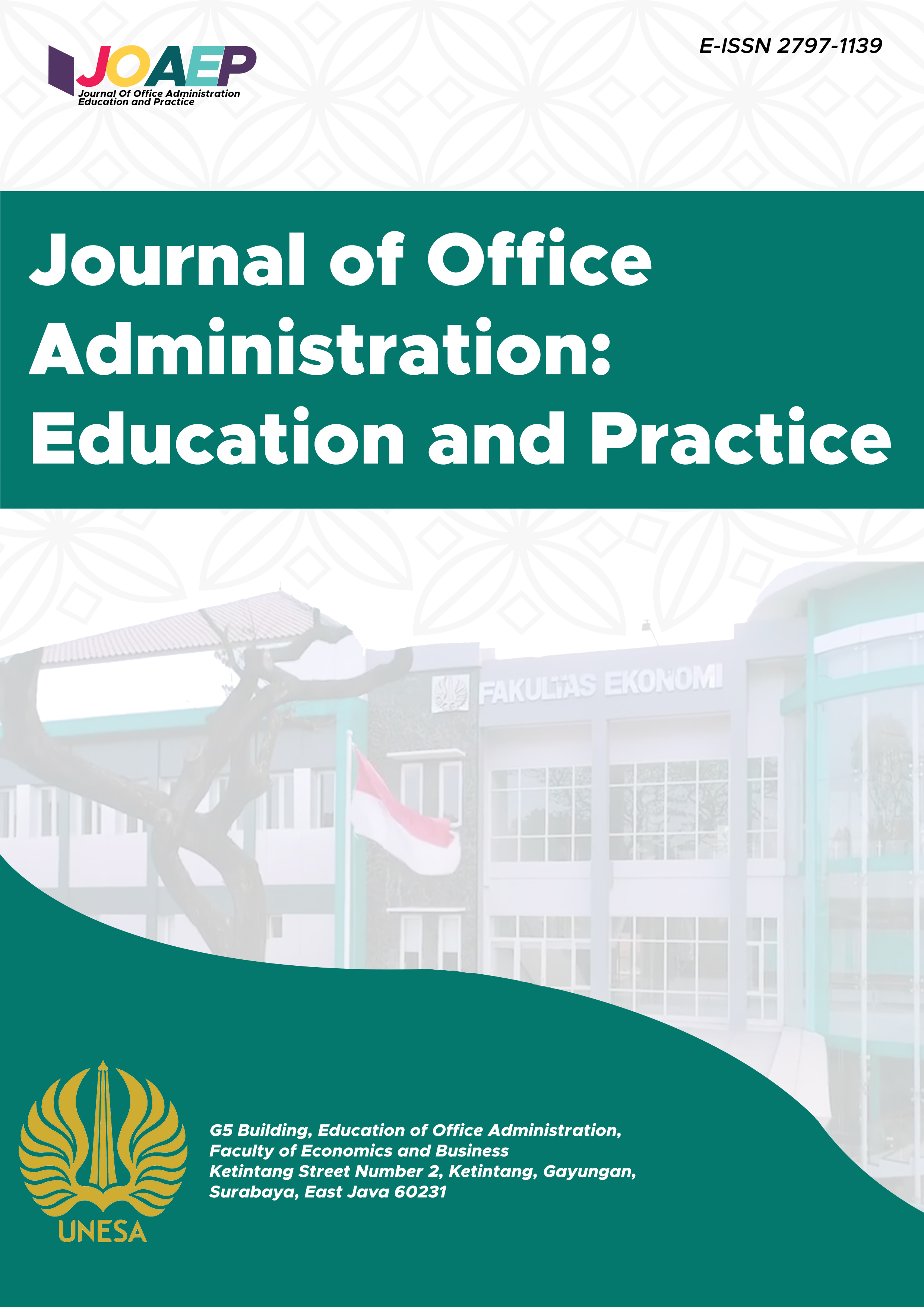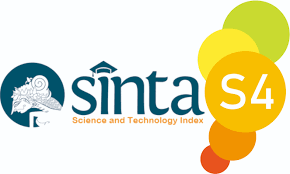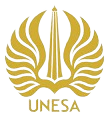Analysis of Public Services to Improve Service Excellence in Bugoharjo Village
DOI:
https://doi.org/10.26740/joaep.v3n1.p52-62Keywords:
Public Service, Excellent Service, Service QualityAbstract
This research analyzes how public services improve great service in Bugoharjo Village, Pucuk District, Lamongan Regency. This study employs a descriptive research method with a qualitative approach, in which the data and information acquired are described in line with the facts in the field and then given in the form of a narrative sentence before concluding. This study will be conducted at the Bugoharjo Village office in Pucuk District, Lamongan Regency. Observation, interviews, and documentation were utilized to obtain data. Source triangulation is the method employed by researchers. Researchers employ the data analysis steps of reduction, display, and conclusion/verification. This research was conducted using interviews and direct observation, yielding data on five different topics: 1) Tangible aspects (real evidence); 2) Reliability aspect (reliability); 3) Responsiveness aspect (responsiveness); 4) Assurance aspect (guarantee); 5) Empathy aspect (empathy). On the surface, the facilities and infrastructure of the Bugoharjo Village Office are relatively complete, but some aspects, such as the service waiting area, might be improved. In terms of dependability or dependability, Bugoharjo has adequately prioritized the quality of its services. In terms of reactivity, the Bugoharjo village office staff are not sufficiently responsive in providing services. Furthermore, in terms of assurance or assurance, it is okay; it is simply that the level of staff discipline needs to be improved again. In terms of empathy, the Bugoharjo village office personnel have used it effectively in providing services, leaving the community quite satisfied.
Downloads
References
Amalia, A. D., & Syawie, M. (2015). Pembangunan Kemandirian Desa melalui konsep pemberdayaan: Suatu Kajian dalam perspektif sosiologi. Sosio Informa, 1(2).
Barber, N., & Scarcelli, J. M. (2010). Enhancing the assessment of tangible service quality through the creation of a cleanliness measurement scale. Managing Service Quality: An International Journal, 20(1), 70–88.
Edlins, M., & Dolamore, S. (2018). Ready to serve the public? The Role of empathy in public service education programs. Journal of Public Affairs Education, 24(3), 300–320.
Faeni, Puspitaningtyas, R., & Faeni, D. P. (2019). Effect of price, promotion, and facilities on customer satisfaction in using the service event management. International Journal of Recent Technology and Engineering, 8(2), 810–814.
Firmansyah, A. C., & Rosy, B. (2021). Pengaruh Kualitas Pelayanan Publik Terhadap Kepuasan Masyarakat. Journal of Office Administration: Education and Practice, 1(2), 82–93.
Inzaghi, A. O., & Rosy, B. (2022). Pengaruh Kompetensi Pegawai Dan Fasilitas Kerja Terhadap Kualitas Pelayanan Publik Di Kantor Desa Purworejo. Al Qalam: Jurnal Ilmiah Keagamaan Dan Kemasyarakatan, 16(4), 1294–1306.
Kharima, L., & Wulandari, S. S. (2020). Analisis Strategi Humas Dalam Meningkatkan Image Positif Pelayanan Administrasi di Kantor Kepala Desa Watudandang Kecamatan Prambon Kabupaten Nganjuk. Jurnal Pendidikan Administrasi Perkantoran (JPAP), 8(1), 1–8.
Mahardika, A., & Wulandari, S. S. (2019). Pengaruh Model Pembelajaran Active Debate Terhadap Hasil Belajar dan Keterampilan Berbicara Pada KD Menerapkan Pelayanan Prima Kepada Pelanggan Kelas XI Di SMKN 1 Jombang. Jurnal Pendidikan Administrasi Perkantoran, 7(03).
Menteri Pendayagunaan Aparatur Negara. (2003). Keputusan menteri pendayagunaan aparatur negara nomor : 63/KEP/M.PAN/7/2003 tentang pedoman umum penyelenggaraan pelayanan publik. Kementerian Pendayagunaan Aparatur Negara Republik Indonesia, p. 55.
Moleong, L. J. (2017). Metode penelitian kualitatif. Bandung: PT Remaja Rosda Karya.
Mukarom, Z., & Laksana, M. W. (2015). Manajemen pelayanan publik. Bandung: Pustaka Setia.
Oktariyanda, T. A., Fanida, E. H., Niswah, F., & Achmadja, N. C. (2021). Cognitive Dimensions in Community Response to the Free Vaccination Programs in Suppressing the Spread of Covid-19 in Sidoarjo Regency. International Joint Conference on Arts and Humanities 2021 (IJCAH 2021), 592–599. Atlantis Press.
Panjaitan, E., Dewi, R., & Angelia, N. (2019). Peranan Pemerintah Desa dalam Meningkatkan Kualitas Pelayanan Administrasi kepada Masyarakat. PERSPEKTIF, 8(1), 32–38.
Prakoso, F. A., Wulandari, N. A. R., Trisnawati, N., Soesatyo, Y., Fitrayati, D., Rachmawati, L., … Andriansyah, E. H. (2017). Reliability, Responsiveness, Assurance, Empathy, And Tangible: Still Can Satisfy The Customer? International Journal of Business and Management Invention ISSN, 6(March), 68–75. Retrieved from www.ijbmi.org
Presiden Republik Indonesia. (2009). Undang-Undang Republik Indonesia Nomor 25 Tahun 2009 tentang Pelayanan Publik. Lembaran Negara RI Tahun 2009. Sekretariat Negara. Jakarta.
Rahayu, S. S., Taufik, M., & Ato’illah, M. (2020). Pengaruh Kualitas Produk Dan Kualitas Pelayanan Terhadap Keputusan Pembelian Susu Segar UD. Adil Brothers Senduro. Jobman: Journal of Organization and Business Management, 2(3), 194–199.
Rahmad, Sabri, & Nasfi. (2022). Analysis of Community Satisfaction Index in Acceptance of Administrative Services. International Journal of Social and Management Studies, 3(1), 247–258.
Rahmawatie, L. C. (2018). Analisis Service Excellence Untuk Meningkatkan Loyalitas Pelanggan Pada Produk Prenagen Mommy di PT Sanghiang Perkasa Cabang Banjarmasin.
Ratminto, & Winarsih, A. S. (2010). Manajemen Pelayanan. Yogyakarta: Pustaka Pelajar.
Salam, M. A. D., & Rosy, B. (2022). Pengaruh Sarana Prasarana dan Kualitas Pelayanan Administrasi Dinas Kependudukan dan Pencatatan Sipil terhadap Kepuasan Masyarakat. Publik: Jurnal Manajemen Sumber Daya Manusia, Administrasi dan Pelayanan Publik, 9(3), 377–391.
Santos, J. (2002). From intangibility to tangibility on service quality perceptions: a comparison study between consumers and service providers in four service industries. Managing Service Quality: An International Journal, 12(5), 292–302.
Sinambela, L. P. (2008). Reformasi pelayanan publik.
Suandi. (2019). Analisis Kepuasan Masyarakat terhadap Pelayanan Publik Berdasarkan Indeks Kepuasan Masyarakat di Kantor Kecamatan Belitang Kabupaten OKU Timur. Journal PPS UNISTI, 1(2), 13–22. https://doi.org/10.48093/jiask.v1i2.8
Sugiyono. (2016). Metode penelitian kuantitatif, kualitatif, dan r & d. Bandung: Alfabeta.
Tjiptono, F., & Chandra, G. (2016). Service, quality and satisfaction. Yogyakarta: Andi Offset.
Tombiling, N. D., & Ogotan, M. (2018). Kualitas Pelayanan Publik Di Kantor Camat Pineleng Kabupaten Minahasa. Jurnal Administrasi Publik, 4(49), 1–11.
Wulandari, S. S. (2018). Employee commitment and service performance. Human Systems Management, 37(4), 381–386.
Downloads
Published
How to Cite
Issue
Section
 Abstract views: 204
,
Abstract views: 204
, PDF Downloads: 180
PDF Downloads: 180











